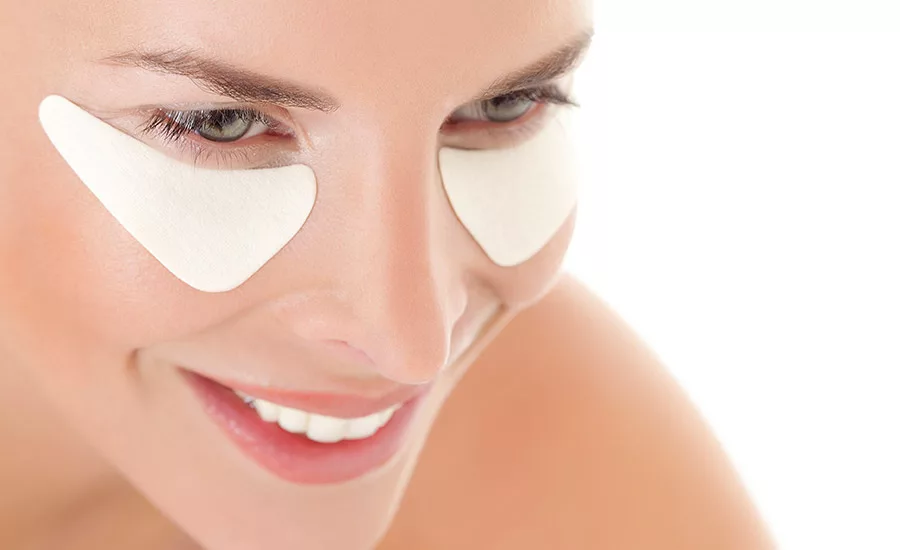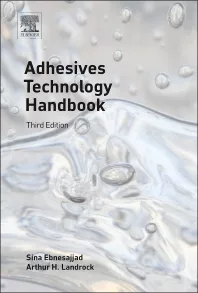Pressure-Sensitive Medical Technology: Challenges and Considerations
Adhesives continue to find applications in the medical and wearable markets.



Advancements in medical technology can revolutionize how consumers track their health and how doctors monitor patients’ ailments. A crucial yet often overlooked component of these technological breakthroughs is pressure-sensitive adhesives (PSAs). Adhesives, liners and films are a relatively inexpensive component of medical devices and wearable technology that are often disregarded in the product development process. However, their selection can have big consequences in terms of the success of a product. A product that falls off or hurts to remove can negatively impact users’ perception of an entire brand.
Challenges in Skin Adhesion
Skin is perhaps the most difficult substrate to adhere to; the adhesive must potentially deal with sweat, water, oil, dirt, cleaning products, lotion, and makeup on top of the skin cells to which it is applied. In addition to these challenges, consider that the cells the adhesive is adhering to are part of a living system that is constantly changing. The skin cells that are no longer useful detach from the skin; once enough cells detach from the body, the adhesive application will also detach. It is important to note that while this might look like adhesive failure, it is not. The adhesive is still adhering to skin cells; however, those skin cells are no longer anchored to the body. This natural shedding process of the body imposes a time limit on how long an application can stay on before the cells it is adhering to are shed (typically a maximum of 3-4 weeks).
On top of all that, there is the practical consideration of removing the product before the skin cells complete their natural lifecycle. Consumers want a gentle, “no-ouch” removal. Nobody wants to use a product that recalls the terrors of their youth in removing a bandage.
Choosing the Right Medical Adhesive
If the adhesive, film and liner materials are chosen properly, they will work together to accentuate the application. The following questions must be addressed when selecting the combination of the film, adhesive and liner.
How long will the application be on the skin?
The longer an application needs to adhere, the stronger the bond must be. This is because skin cells are continually completing their natural lifecycle and being shed from the body.
Will the adhesive need to be repositioned?
This relates to how quickly the adhesive bonds to the skin. If it bonds quickly, residue such as oil, dirt and skin cells will stay with the application and deaden the adhesive, causing it to be less tacky.
Will the adhesive be used in a stress situation?
In a stress, or hot, situation, the human body’s response is vastly different than a normal, or cold, situation. The body may introduce sweat to or around the application site, which could affect the adhesive’s ability to adhere.
Does the application require high moisture vapor transmission rate (MVTR) through the film?
The MVTR is important not only for the adhesive but for the film and the complete composition of the product. A breathable product allows for moisture on the skin to leave the application site through the application. This will allow for the product to stay on longer, as the adhesive is not deadened by the water molecules.
Will the application need to be sterilization compatible?
You do not want the adhesive properties to change or behave differently than expected once it goes through sterilization.
Must the device substrate be conformable or flexible?
The right adhesive with the wrong film is a major problem. If the film is stiff, it can cause the adhesive to lift of the skin when the body flexes.
Unique Device Identifiers in Medical Applications
In addition to the adhesives, medical device manufacturers should stay up to date on industry regulations and legislation regarding unique device identifiers (UDIs) to maintain traceability and prevent fraud or supply chain issues. The UDI legislation requires a medical device manufacturer to register their device with the FDA, which will then assign a UDI for that product. The goal of this process is to provide traceability through the supply chain and in the individual’s electronic medical records for future investigations. These investigations may include fraud or simply tracking a device on usage. The UDI bar codes are also useful when scheduling repairs or upgrades to medical equipment.
The Future of Medical Adhesives
Technological advancements are continuing to expand the possibilities of medical adhesives for use in next-generation healthcare solutions. With technology constantly getting smaller, thinner and more complex, adhesives will soon be used as components of new technologies on a micro scale.
Medical adhesives will help change the way consumers track their own health. For example, patches that use skin-contact adhesive and act as a “second skin” could monitor health activity on a daily basis. Imagine a Fitbit that could be applied directly to the skin like a bandage and could last for several days, as opposed to a device that you need to remember to wear on your wrist on a daily basis. This level of convenience would increase the frequency with which individuals use this type of preventative technology, likely creating an overall healthier population.
Just as wearable devices have transformed how consumers track their fitness, wearable medical devices are initiating a shift in the healthcare industry toward more personalized, preventative and predictive care for the general population. Adhesives are a key component of this new era of wearable devices. Adhesives allow patches to adhere directly on the skin without an extra device, which drastically increases the frequency of use and convenience for the user.
With the medical and technology markets developing rapidly alongside each other, there is no limit to the extent of new possibilities open to patients and healthcare practitioners alike. In addition, there is an increased need for complete solutions that meet all industry certifications and very specific patient needs, while also sustaining and delivering on the quality solution for which the device was originally created. In order to stay ahead of the curve, medical product manufacturers must keep pace with the evolving technology and implement it into consumer healthcare solutions. Manufacturers must be nimble, both in creating new technology applications for products, but also in working to adapt and apply existing technology for new developments down the road.
Adhesives are expected to continue their progression into the medical and wearable market. As technology evolves and continues to shrink the amount of space needed for the same amount of processing power, the trend is clearly pointing toward a future where second-skin applications are as common as smartphones today. To ensure that the technology embedded in the second-skin application shines through, manufacturers need to carefully consider the adhesive, film, and liner selection. This selection should work in concert with the embedded technology and fade to the background so that the consumer never thinks about the selection. When this happens, the application then becomes a part of the user’s daily life.
For more information, visit www.flexcon.com.
Industry Standards for Skin Contact
While different products have different needs, all applications must be biocompatible as defined by ISO 10993-5 and -10. ISO 10993 is the industry standard for testing of skin contact applications of a medical device. ISO 10993-5 and -10 refer to the tests for irritation, sensitization, and cytotoxicity. These tests are set out by the Food and Drug Administration (FDA) in a Draft Guidance as the evaluation tests for consideration for medical devices that have intact skin contact.
Looking for a reprint of this article?
From high-res PDFs to custom plaques, order your copy today!





